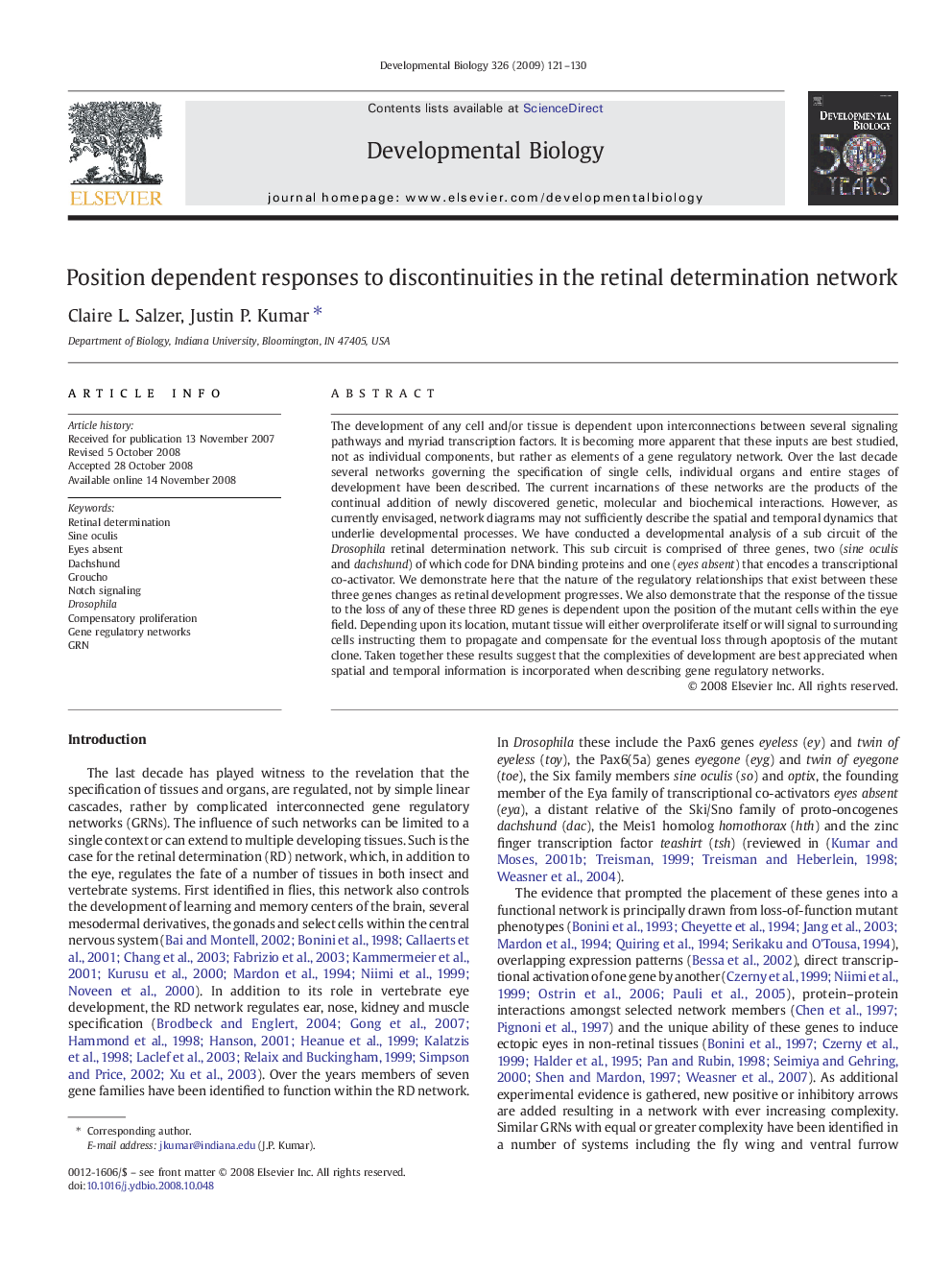| Article ID | Journal | Published Year | Pages | File Type |
|---|---|---|---|---|
| 10933537 | Developmental Biology | 2009 | 10 Pages |
Abstract
The development of any cell and/or tissue is dependent upon interconnections between several signaling pathways and myriad transcription factors. It is becoming more apparent that these inputs are best studied, not as individual components, but rather as elements of a gene regulatory network. Over the last decade several networks governing the specification of single cells, individual organs and entire stages of development have been described. The current incarnations of these networks are the products of the continual addition of newly discovered genetic, molecular and biochemical interactions. However, as currently envisaged, network diagrams may not sufficiently describe the spatial and temporal dynamics that underlie developmental processes. We have conducted a developmental analysis of a sub circuit of the Drosophila retinal determination network. This sub circuit is comprised of three genes, two (sine oculis and dachshund) of which code for DNA binding proteins and one (eyes absent) that encodes a transcriptional co-activator. We demonstrate here that the nature of the regulatory relationships that exist between these three genes changes as retinal development progresses. We also demonstrate that the response of the tissue to the loss of any of these three RD genes is dependent upon the position of the mutant cells within the eye field. Depending upon its location, mutant tissue will either overproliferate itself or will signal to surrounding cells instructing them to propagate and compensate for the eventual loss through apoptosis of the mutant clone. Taken together these results suggest that the complexities of development are best appreciated when spatial and temporal information is incorporated when describing gene regulatory networks.
Keywords
Related Topics
Life Sciences
Biochemistry, Genetics and Molecular Biology
Cell Biology
Authors
Claire L. Salzer, Justin P. Kumar,
